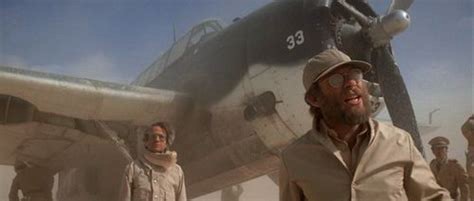There’s a moment in the Wachowski’s seminal 1999 movie the Matrix where Keanu Reeve’s elegantly blank Neo sees the same black cat walk past a doorway twice. In the movie, such moments are signals that the nefarious Agents are about to emerge into Neo’s simulated reality and give him the mother of all cardio workouts.

But what if something similar were to happen to you?
Perhaps you have a similar moment of déjà vu, notice that roses now seem to smell like freesias or that the sky suddenly looks a bit purple. Everyone you tell about this discovery, however, insists that everything is the “same as it ever was” (in the words of the old song). Roses smell as sweet. The sky is the same old blue.
Perhaps after a while, you might accept that it’s your perception that is at fault, shrug a little and decide to get on with the gardening. But at the back of your mind there might be a nagging doubt. Perhaps you were never supposed to notice the difference.
This is the terrain of the weird. Not quite full blown fantasy, but the quiet unease that things might not be quite right. A sense that the ground beneath your trainers might be a little less solid than you previously thought.
Few books map out this territory more ingeniously than The City & the City by China Miéville or The House on the Borderlands by William Hope Hodgson. Both of these novels deal in epistemic slippage, the boundaries of what is knowable and what is known, (what Miéville himself has referred to as “sublime backwash”). Each exists though at the polar opposite of the other. Where Miéville presents us with a world where the epistemological structure is brutally policed, Hope Hodgson describes a universe where there is absolutely and gloriously no epistemological structure whatso-fucking-ever.
In Miéville’s murder mystery, Inspector Borlú a policeman from the city of Besźel investigates a murder that requires him to work with a partner in the twin city of UI Qoma. Nothing too odd there you might think, except for the fact that the two cities share much of the same physical space. In order to maintain the illusions of separateness and sovereignty, citizens of one city must “unsee” anything pertaining to the other, ignoring people, buildings and even events that occur right in front of them. Failure to do so results in an intervention from the shadowy and terrifying force known as Breach.
Treated with a near mythical dread, Breach, disappear any violators or evidence of transgression, maintaining the ideal of separateness. They have an almost supernatural ability to detect and punish any infractions and in many ways function much like the Agents in the Matrix. They’re spectral, terrifying antagonists who are rarely perceived and cannot be beaten. Only they have access to the duality of the world as it is and as it is perceived.
One of the brilliant things about the novel is that crossing between the cities is a bureaucratic activity. Visitors must queue up to pass through a universal access point, Cupola Hall, filling out forms and editing their perceptions as they go. (Imagine entering Narnia via passport control.) Breach, then, isn’t just a surveillance force, it’s the living embodiment of the Gutenberg Parenthesis: the period between the rise of print and the digital age, when truth was shaped by centralised, text-based notions of authority.
Now, let’s flip this on its head.

In House on the Borderlands, if there is an equivalent of Breach they’re all out for coffee and donuts. Within the book’s framing narrative, an old man dwells in a remote house that seems to be perched precariously on the edge of space and time itself. Violent swine-things emerge from the wilderness and attack him (and his dog!). A pit opens into infinity. The house falls into disrepair as does reality itself. Time speeds up and slows down and the old man sees the solar system wither and die, meeting with the spirit form of his lost love in the process. (Clearly, the cosmic horror equivalent of drunk-texting your ex).
Here is a world without perceptual control. Consequently, the old man witnesses everything, including the heat-death of the Universe and it does him in. There’s no central authority to frame events, no system to structure reality, everything is in a state of turmoil and collapse.
It’s easy enough to see the connection here. Both novels dramatise the opposite ends of the epistemic spectrum. In The City & the City Borlú experiences the effect of a suffocating truth apparatus: ultimately you-can-only-see-what-you’re-allowed-to. In The House on the Borderlands we get a peek at what happens when no-one is in charge, not even reality itself.
It’s fair to say that we’re somewhere in the middle of these two extremes right now, that the five hundred years or so since the invention of print has been the equivalent of sleeping on Borlú’s sofa: uncomfortable, but still governed by house rules. We got verifiable truth, experts and certified sources. (A Breach of sorts also, perhaps). But it’s hard not to feel that that period is coming to an end, that while we were sleeping the internet and digital culture pushed our bed into the old man’s house on the edge of the abyss.
What is clear here is that command of the truth equates to political power. Breach wouldn’t be able to exert its control without the compliance of the citizenry of Besźel and UI Qoma. In the House on the Borderlands human history (and, ergo, all politics) is vapourised against the sheer scale of cosmic time.
But noticing that shit-gets-strange is not the same as deciding that the moon landings were faked, or that JFK was an alien. Engaging with the weird isn’t a call to relativism or an embrace of conspiratorial thinking.
There is a philosophical and moral distinction, I think, between questioning the framework and denying reality itself. While the weird draws attention to how things fit together (or not) and why, it is not an invitation to retreat from the rational. Rather, it should encourage us to ask how the rules around truth are made, who enforces them and what happens when they falter.
In world where politicised digital culture exhorts us to pick a side, the blue pill or red pill perhaps instead we should be asking: where did these pills come from? And who’s interest does it serve to keep us squabbling?
Or as Tony Benn once pithily framed it :
- what power have you got?
- where did you get it from?
- in whose interests do you exercise it?
- to whom are you accountable?
- and how can we get rid of you?
If “doing your own research” simply means finding other people on the internet who already agree with you then I humbly submit you’re doing it wrong. Each one of those bits of confirmation bias edges us closer to the old man’s pit and the swine-things.
So we carry on watching the sky. And if it seems a bit too purple, maybe we don’t insist it’s blue out of habit or call it green out of spite. We just keep looking, keep asking and perhaps resist the pressure to unsee.
playlist
My fantasy debut: The Lighthouse at the End of the World from Titan books is available for preorder now.
- Tony’s Benn’s five questions; youtube.com
- House on the Borderlands, William Hope Hodgson: Bookshop.org
- House on the Borderlands, (Revelstroke, Corben, Robins) graphic novel: dc.com
- City & The City (miniseries): imdb
- City & The City, China Miéville:Bookshop.org
- The Matrix vs Clubbed to Death: youtube.com
- Lilly Wachowski responds to Elon Trump’s Red Pill comment: the hellscape formally known as Twitter
- The Routledge Companion to Science Fiction (2009) Miéville’s definition of weird fiction as “sublime backwash”.

